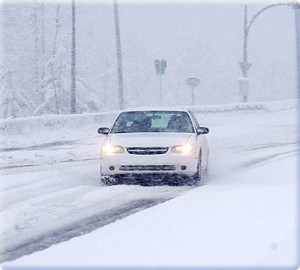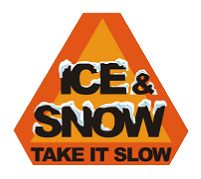 If you find yourself driving in the snow, stay alert, slow down and stay in control. These are the three key elements to safe driving in the snow.
If you find yourself driving in the snow, stay alert, slow down and stay in control. These are the three key elements to safe driving in the snow.
Here are a few other tips for driving in the snow:
- If you think you may be heading into snow or there is a possibility of driving in the snow, make sure you do a maintenance check on your vehicle before making the trip. Check the vehicle battery, belts and hoses, anti-freeze, oil, lights, brakes, heater and defroster and check the exhaust system for leaks which may allow carbon monoxide to enter the vehicle.
- Plan your route ahead of time and give yourself extra travel time. Make sure someone knows your travel plans.
- Wear comfortable clothing that does not restrict your movement while at the wheel. Keep warm clothing available for when you exit the vehicle.
- Always clear any snow and ice from all windows, lights, mirrors and the roof before driving. After starting the vehicle wait for the interior windows to clear of fog so you will have appropriate visibility.
- Make sure there is sufficient windshield washer fluid in the vehicle reservoir and that it is rated for freezing temperatures.
- It takes longer to stop on slippery surfaces, so add additional time to the three-second rule.
- Know the proper handling procedures for a skidding vehicle.
- Slow down in snow and icy conditions, make turns slowly, and make all starts slow and smooth.
- Remember that bridges and overpasses may freeze before the regular travel lanes of a roadway. Watch out for black ice, areas of the roadway that appear black and shiny and where your vehicle can suddenly lose traction. Slow down in these areas and keep your foot off the brakes.
- If you get stuck or stranded, don’t panic. Stay with your vehicle for safety and warmth. Wait for help to arrive. If you have a cell phone and are in an area with cell phone service, try calling for help. Try to always know your exact locations while driving.
- Keep your clothing dry. Wet clothing can lead to dangerous loss of body heat.

